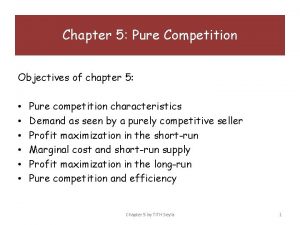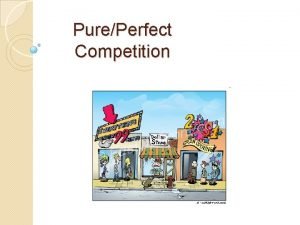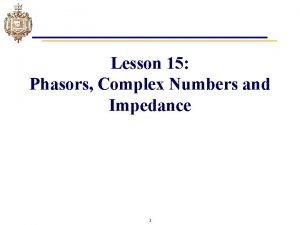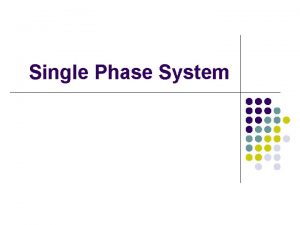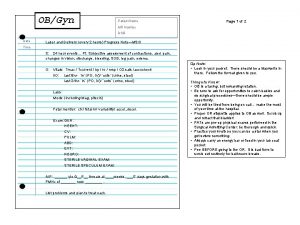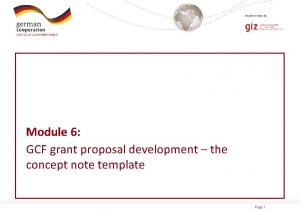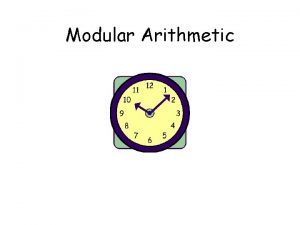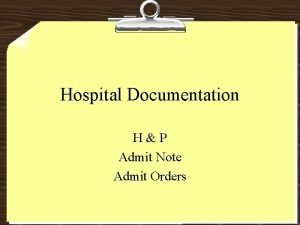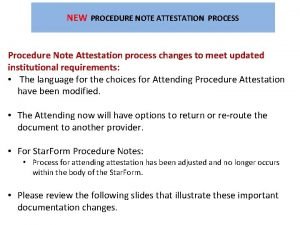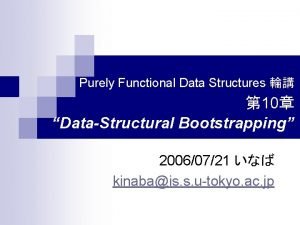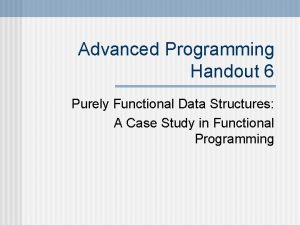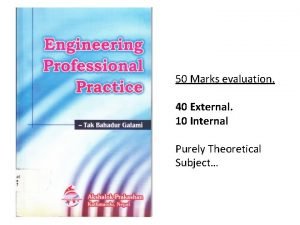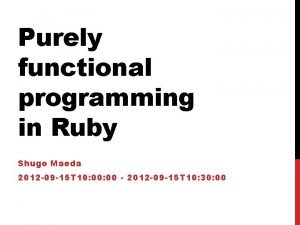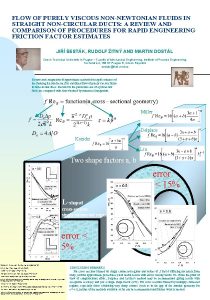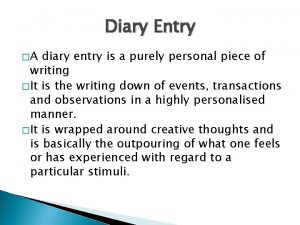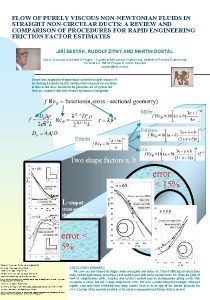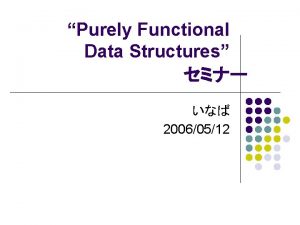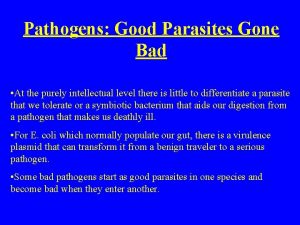Note that this template is purely a template











































- Slides: 43

Note that this template is purely a template; universities will be required to enter the information in this presentation into an online portal hosted by the Deputyship of Research & Innovation The Research & Innovation Strategy of [Insert University Name] (2020 -2024) Submission Date: XX-XX-2020 v 2

Strategy Contents Part 1: The Context Part 2: The Plan Section 1: Mission and Scope for Research 1. 1 University Mission Statement for Research 1. 2 Current Research Focus Areas Section 4: Research Plan 4. 1 Overarching R&D Goals 4. 2 Research Priorities & Associated Activities 4. 3 Overall Targets Sections 2: Current Capabilities for Research 2. 1 Researchers and Support Staff 2. 2 Research Environment 2. 3 Funding Section 3: Research Accomplishments 3. 1 Output 3. 2 Impact 1

Part 1: The Context 2

Part 1: The Context The core objectives in developing ‘The Context’ section of this University Research & Innovation Strategy Plan: R&D Baseline To establish a baseline of knowledge on your university’s existing R&D activities Existing Capabilities To generate an overall understanding of your internal capabilities and broader R&D advantages across the Kingdom’s R&D ecosystem Future Enhancement To develop key findings as well as specific recommendations to further enhance R&D internal capabilities and output From the lens of institutional funding…. To assess R&D historical performance data you provide in relation to institutional funding evaluation criteria 3

Part 1: The Context Section 1: Mission and Scope for Research 4

Section 1: 1. 1 University Mission Statement for Research Part 1: The Context 1. 1: University Mission Statement for Research Instructions: In the boxes below, provide high-level statements that describe the purpose of your university’s R&D (why does it exist), and what makes your university’s R&D unique. Feel free provide statements that may be linked to the following areas (if applicable): 1. 2. 3. 4. The excellence in research and scientific outcomes that the university aims to achieve (or continue to achieve) The innovation/commercialization challenges that the university aims to address (or continue to address) The economic and/or industrial sectors that the university will target (or continue targeting) The societal issues or community challenges that the university aims to contribute to (or continue contributing to) The University Mission Statement for Research 1 2 [insert statement 1 here] 3 [insert statement 2 here – if applicable] 4 [insert statement 3 here – if applicable] [insert statement 4 here – if applicable] *Please refer to the Ministry of Education ‘Institutional Funding Guidelines’ for more detail on how to respond to each section of this Strategy Template 5

Part 1: The Context Section 1: 1. 2 Current Disciplinary Strengths 1. 2: Disciplinary Strengths Instructions: In the next slides, provide a list of Disciplinary Strengths that your university is currently concentrating its research, development and innovation activities on. What is a “Disciplinary Strength”? • A Disciplinary Strength is a “Second-level classification” of disciplines based on the Frascati Manual 2015 [see next slide for full list] Notes: 1 - Please select the number of Disciplinary Strengths in a manner that fits with your university’s existing research and innovation capacity 2 - The order of the Disciplinary Strengths will reflect your university’s priority areas 6

Part 1: The Context Section 1: 1. 2 Current Disciplinary Strengths “Focus Area” – A second-level disciplinary classification as outlined in the 2015 Frascati Manual Disciplinary List 1. Natural Sciences 1. 1 Mathematics 1. 2 Computer and information sciences 1. 3 Physical sciences 1. 4 Chemical sciences 1. 5 Earth and related environmental sciences 1. 6 Biological sciences 1. 7 Other natural sciences Example: 2. Engineering and technology 2. 1 Civil engineering 2. 2. Electrical engineering, electronic engineering, information engineering 2. 3 Mechanical engineering 2. 4 Chemical engineering 2. 5 Materials engineering 2. 6 Medical engineering 2. 7 Environmental engineering 2. 8 Environmental biotechnology 2. 9 Industrial biotechnology 2. 10 Nano-technology 2. 11 Other engineering and technologies Broad Classification: Natural Sciences 3. Medical and health sciences 3. 1 Basic medicine 3. 2 Clinical medicine 3. 3 Health sciences 3. 4 Medical biotechnology 3. 5 Other medical science 4. Agricultural and veterinary sciences 4. 1 Agriculture, forestry, and fisheries 4. 2 Animal and dairy science 4. 3 Veterinary science 4. 4 Agricultural biotechnology 4. 5 Other agricultural sciences 5. Social sciences 5. 1 Psychology and cognitive sciences 5. 2 Economics and business 5. 3 Education 5. 4 Sociology 5. 5 Law 5. 6 Political science 5. 7 Social and economic geography 5. 8 Media and communications 5. 9 Other social sciences 6. Humanities and the arts 6. 1 History and archaeology 6. 2 Languages and literature 6. 3 Philosophy, ethics, and religion 6. 4 Arts (arts, history of arts, performing arts, music) 6. 5 Other humanities Second-Level Classification: Mathematics; Computer & Info. Sciences, etc. 7

Please duplicate this slide and the slide below according to the number of ‘Disciplinary Strengths’ your university wants to share in this Plan Part 1: The Context Section 1: 1. 2 Current Disciplinary Strengths 1. 2: Disciplinary Strengths Disciplinary Strength #[Insert Number Here]: (Insert Discipline Here) What specific sub-disciplinary topics would you identify your university to have research excellence in: • • [insert response here] … A Number of Post-Docs in this discipline (2018 -19 academic year) [insert response here] B Number of Ph. Ds in this discipline (2018 -19 academic year) [insert response here] C Number of Master’s Students in this discipline (2018 -19 academic year) [insert response here] D Name of the University Academic Department(s) involved in this discipline (2018 -19 academic year) [insert response here] E Name of the Specialized Research Center(s)/Institute(s) in this discipline (2018 -19 academic year) [insert response here] F Number of ongoing projects contributing to the discipline (2018 -19 academic year) [insert response here] G Number of Scopus publications contributing to this discipline (2014 -18)* [insert response here] H Number of non-Scopus publications contributing to the discipline (2014 -18)* [insert response here] I Number of Patents filed in the discipline (2015 -2018)* [insert response here] J Number of Patents issued in the discipline (2015 -2018)* [insert response here] *Use the standard year format to provide these data points (not academic year) Note: Please refer to the ‘All Science Journal Classification’ as a reference in selecting your university’s ‘Sub-disciplinary topics’ 8

Please duplicate this slide and the slide above according to the number of ‘Disciplinary Strengths’ your university wants to share in this Plan Part 1: The Context Section 1: 1. 2 Current Disciplinary Strengths 1. 2: Disciplinary Strengths Disciplinary Strength #[Insert Number Here]: (Insert Discipline Here) 1. 2. 3. K Name of journals published by your university that focus on this discipline, in addition to the journal’s Scopus Cite. Score metric L Contribution towards economic, social, or industry issues in this discipline (2015 -2018) [insert response here] M Field-Weighted Citation Impact of your discipline based on the ‘Fields of Research and Development’ Frascati Manual classification available in Scopus (2014 -2018) [insert response here] N Average citations per publication in this discipline based on the ‘Fields of Research and Development’ Frascati Manual classification available in Scopus (2014 -2018) [insert response here] O The name and a short description of any key collaborations or strategic partnerships your university had with external stakeholders in this discipline (2015 -2018) [insert response here] *Please add more slides to this presentation if you do not have sufficient space [Insert title here, and Cite. Score (if applicable)] … 9

Part 1: The Context Section 1: 1. 2 Current Disciplinary Strengths 1. 2: Disciplinary Strengths Interdisciplinary Research & Innovation Activities P Define the level of interdisciplinary research that exists within any of your aforementioned Disciplinary Strength Areas. This may include interdisciplinary projects, theses, research teams & collaborations, technology development, or research techniques and perspectives. 1 [insert response here] 2 [insert response here] 3 [insert response here] Interdisciplinary Research: “a mode of research by teams or individuals that integrates information, data, techniques, tools, perspectives, concepts, and/or theories from two or more disciplines or bodies of specialized knowledge to advance fundamental understanding or to solve problems whose solutions are beyond the scope of a single discipline or area of research practice” Source: NSF (2004) 10

Part 1: The Context Section 2: Current Capabilities for Research 11

Part 1: The Context Section 2: 2. 1 Researchers and Support Staff INSTRUCTIONS: For your university as a whole, provide the following statistics based on the 2018– 2019 academic year 2. 1. 1 Researchers A Total Number of Ph. D Holders (either faculty or full-time researchers) [insert response here] B Total Number of MSc Holders (full-time researchers only) [insert response here] C Total Number of Post-Docs [insert response here] D Total Number of Enrolled Master and Ph. D Students [insert response here] 12

Part 1: The Context Section 2: 2. 1 Researchers and Support Staff INSTRUCTIONS: For your university as a whole, provide the following statistics based on the 2018– 2019 academic year 2. 1. 1 Researchers E If your university has Ph. D Degree Programs, indicate below the (a) Program Title, and (2) Number of enrolled Ph. D students Ph. D Program Title Number Enrolled Students 1 [insert title and affiliated department here] [insert response here] 2 [insert title and affiliated department here] [insert response here] 3 [insert title and affiliated department here] [insert response here] 4 … 5 … 6 … 7 … 8 … *Please add more slides to this presentation if you do not have sufficient space 13

Part 1: The Context Section 2: 2. 1 Researchers and Support Staff INSTRUCTIONS: For your university as a whole, provide the following statistics based on the 2018– 2019 academic year 2. 1. 2 Research-Support Staff F Total Number of Lab Technicians [insert response here] G Total Number of Administrators and Non-Technical Staff [insert response here] 2. 1. 3 Research-Support Office and Other Research Support H Below, list the existing research support services your university offers: 1. [insert response here] 3. [insert response here] 5. … 7. … 2. [insert response here] 4. [insert response here] 6. … 8. … *Please add more slides to this presentation if you do not have sufficient space 14

Part 1: The Context Section 2: 2. 2 Research Environment INSTRUCTIONS: For your university as a whole, provide the following statistics based on the 2018– 2019 academic year 2. 2. 1 Research Centers – Centers of Excellence – Research Institutes I List the names of your university’s Research Centers, Centers of Excellence, and Research Institutes (other than academic departments) 1 [insert name here] 2 [insert name here] 3 [insert name here] 4 [insert name here] 5 [insert name here] 6 [insert name here] 7 8 9 10 11 12 13 14 15 16 17 18 15

Part 1: The Context Section 2: 2. 2 Research Environment INSTRUCTIONS: For your university as a whole, provide the following statistics based on the 2018– 2019 academic year 2. 2. 2 Major Research Labs - Facilities J List the names of your university’s major research facilities and labs managed by (a) academic departments or (b) Research Centers, Centers of Excellence and Research Institutes 1 [insert lab/facility name, and its affiliated Dept. /Center here] 2 [insert lab/facility name, and its affiliated Dept. /Center here] 3 [insert lab/facility name, and its affiliated Dept. /Center here] 4 [insert lab/facility name, and its affiliated Dept. /Center here] 5 [insert lab/facility name, and its affiliated Dept. /Center here] 6 [insert lab/facility name, and its affiliated Dept. /Center here] 7 8 9 10 11 12 13 14 15 16 17 18 16

Part 1: The Context Section 2: 2. 3 Funding INSTRUCTIONS: For your university, provide the following statistics from 2015 to 2018: 2. 3. 1 External Funding External Grants K Total Number of Grants 2015 2016 [insert here] … 2017 2018 Total L Total Funding (SAR Million) Contractual Projects M Total Number of Projects 2015 2016 [insert here] … N Total Revenues (SAR Million) 17

Part 1: The Context Section 2: 2. 3 Funding INSTRUCTIONS: For your university, provide the following statistics from 2015 to 2018: 2. 3. 2 Internal Funding Internal Grants O Total Number of Grants 2015 2016 [insert here] … 2017 2018 Total P Total Funding (SAR Million) 18

Part 1: The Context Section 3: Research Accomplishments 19

Part 1: The Context Section 3: 3. 1 Output 3. 1 Research Output INSTRUCTIONS: For your university, provide the following statistics from 2015 to 2018: 3. 1. 1 Scientific Output A Scholarly Output: Number of Publications (Articles & Reviews only)* B Other Scholarly Output: No. Conference Papers, Books, Book Reviews, etc. * C Number of Non-Scopus Publications (Articles & Reviews) 2015 2016 [insert here] … 2017 2018 Total University Self-Journals Title D List the names of the Journals your university owns and publishes (if applicable) *Data source: Scopus 1. [insert title here] 2. 3. 4. Cite. Score* (if applicable) 1. [insert here] 2. 3. 4. Indexed in Scopus? (Yes/No) 1. [insert here] 2. 3. 4. 20

Part 1: The Context Section 3: 3. 1 Output 3. 1 Research Output INSTRUCTIONS: For your university, provide the following statistics from 2015 to 2018: 3. 1. 2 Innovation / Commercialization Output E Number of Issued Patents through SAIP F Number of Issued Patent Families Applications Filed (simple families) G Number of Published PCT Applications 2015 2016 [insert here] … 2017 2018 Total 2017 2018 Average 3. 1. 3 Entrepreneurship Output H Number of university students & faculty involved in projects for startup formation and incubated businesses I Number of projects for startup formation and incubated businesses (resulting from patented or non-patented university research outcomes) 2015 2016 [insert here] … 21

Part 1: The Context Section 3: 3. 2 Impact 3. 2 Research Impact INSTRUCTIONS: For your university, provide the following statistics from 2015 to 2018: 3. 2. 1 Scientific Impact J Publications in Top Journal Percentiles: Publications in top 10% of journals* K Proportion of Publications in Top Journal Percentiles: Publications in top 10% of journals* L Publications in Top Citation Percentiles: Publications in top 10% of most cited publications worldwide* M Proportion of Publications in Top Citation Percentiles: Publications in top 10% of most cited publications* N Citation Count (Articles & Reviews only)* O Citations per Publication* *Data source: Scopus 2015 2016 2017 2018 Average [insert here] … … … [provide 2015 -18 average] 22

Part 1: The Context Section 3: 3. 2 Impact 3. 2 Research Impact INSTRUCTIONS: For your university, provide the following statistics from 2015 to 2018: 3. 2. 2 Innovation / Commercialization Impact P Number of Licensing/Option Deals Q Number of Patents Involved in all Licensing/Option Deals 2015 2016 [insert here] … 2017 2018 Total 2017 2018 Average 3. 2. 3 Entrepreneurship Impact R Number of Startups that Resulted from Licensing/Option Deals (Technology-Transfer) S Number of Startups that Resulted from Non. Patented Research Results (Knowledge-Transfer) 2015 2016 [insert here] … 23

Part 1: The Context Section 3: 3. 2 Impact 3. 2 Research Impact INSTRUCTIONS: For your university, provide the following statistics from 2015 to 2018: 3. 2. 4 Economic - Social Impact T Citing-Patents Count: number patents citing publications published at your university* U Patent-Cited Scholarly Output: number of publications from your university that have been cited in patents* V Patent-Citation Count: number of patent citations your university received* *Data source: Scopus 2015 2016 [insert here] … 2017 2018 Average 24

Part 1: The Context Section 3: 3. 2 Impact 3. 2 Research Impact INSTRUCTIONS: For your university, provide a brief response to the below questions for 2015 to 2018: 3. 2. 4 Other Economic – Social Impact List your contribution to any major industrial problems/challenges (if applicable): W 1 [insert here] 2 3 4 X List your contribution to any national or regional social challenges (if applicable): 1 2 3 4 *Please add more slides to this presentation if you do not have sufficient space 25

Part 1: The Context Section 3: 3. 2 Impact 3. 2 Research Impact INSTRUCTIONS: For your university, provide a brief response the below questions: 3. 2. 4 Other Economic – Social Impact List your contribution to any national or regional economic challenges (if applicable) from 2015 -2018: Y 1 [insert here] 2 3 4 3. 2. 5 Impactful Collaborations / Strategic Partnerships (International & National) Z AA International Collaboration Field-Weighted Citation Impact (2014 -2018): [insert response here] National Collaboration Field-Weighted Citation Impact (2014 -2018): [insert response here] *Please add more slides to this presentation if you do not have sufficient space 26

Part 1: The Context Section 3: 3. 2 Impact 3. 2 Research Impact INSTRUCTIONS: Please list some key research and innovation partnerships/collaborations your university established from 2015 to 2018: 3. 2. 5 Impactful Collaborations / Strategic Partnerships (International & National) With (a) Universities and (b) Research Institutions BB Name of Partner/Collaborator Nature of Collaboration/Partnership Major Outcomes 1. 2. 3. 4. *Please add more slides to this presentation if you do not have sufficient space 27

Part 1: The Context Section 3: 3. 2 Impact 3. 2 Research Impact INSTRUCTIONS: Please provide the following information for the period 2015 to 2018: 3. 2. 6 Recognition and Esteem CC List key official Conferences or Symposia (if any) your university organized 1. [insert here] 2. 3. 4. DD List key rewards your university (or faculty/researchers) received 1. 2. 3. 4. EE List editorships your university’s faculty/researchers held 1. 2. 3. *Please add more slides to this presentation if you do not have sufficient space 28

Part 1: The Context Section 3: 3. 2 Impact 3. 2 Other Research Impact INSTRUCTIONS: Please list below any other impact you would like to include for the period 2015 to 2018: FF [insert additional information here] 29

Part 2: The Plan 30

Part 2: The Plan The core objectives in developing ‘The Plan’ section of this University Research & Innovation Strategy Plan: Strategic Direction To provide a sense of direction in where to focus R&D activities and associated funding KSA National Priorities To align internal R&D capabilities to broader KSA national and regional priorities R&D Institutional Alignment To establish internal consistency across all researchers within a university in contributing to the same R&D goals From the lens of institutional funding…. To assess continued institutional funding based on proposed goals, activities and targets 31

Part 2: The Plan Section 4: Research Plan *Note that your university’s proposed ‘Strategy Goals’ and ‘Research Priorities’ will serve as the core of your strategy from 2020 -2025; however, any proposed ‘Plans’ or ‘Activities’ should be provided for only a 3 year period of 2020 -2022 32

Part 2: The Plan Section 4: 4. 1 Overarching R&D Goals 4. 1: Overarching R&D Goals Instructions: In the box below provide a maximum of 4 high-level, overarching goals that will drive the strategic direction for your university’s R&D for the next 5 years* (2020 -2024): What makes a “Goal”? • Goals support the achievement of a larger purpose or strategy • Goals are what you want to achieve (rather than how you want to achieve it) • Goals may not be measureable and have longer time frames • Goals are aligned within and across functions and departments to ensure everyone is contributing to a higher purpose Strategy Goals 1 2 [insert statement 1 here] 3 [insert statement 2 here – if applicable] 4 [insert statement 3 here – if applicable] [insert statement 4 here – if applicable] *Note that your university’s proposed ‘Strategy Goals’ and ‘Research Priorities’ will serve as the core of your strategy from 2020 -2025; however, any proposed ‘Plans’ or ‘Activities’ should be provided for only a 3 year period of 2020 -2022 33

Part 2: The Plan Section 4: 4. 2: Research Priorities and Associated Activities INSTRUCTIONS: 4. 2: Research Priorities and Associated Activities In the next slides, provide a list of Research Priorities that your university would like to concentrate its research, development, and innovation activities in relation to: (a) The allocation of Ministry of Education institutional funding from 2020 -2022, as well as (b) Your broader University Research & Innovation Strategy over the period of 2020 -2024 What is a “Research Priority”? • An area, be it within the scope of research, development, or innovation your university would like to focus on given your existing “Disciplinary Strengths” from Part 1, internal capabilities and external KSA opportunities for R&D • Note that Research Priorities can be shaped in terms of a discipline, type of R&D [basic vs. applied], economic, social, or industrial challenges, or any other factor the university deems worthy of focus that falls within the R&D activity limits of the Deputyship for Research & Innovation (DRI) Notes: 1 - Please select the number of Research Priority Areas in a manner that fits with your university’s existing R&D capacity 2 - The Deputyship for Research & Innovation at the Ministry of Education will evaluate universities based on their ability to identify appropriate, yet strategic Priority Areas linked to their Disciplinary Strengths and submit appropriate reports 34

Please duplicate this slide and the 2 slides below according to the number of ‘Disciplinary Strengths’ your university wants to share in this Plan Part 2: The Plan Section 4: 4. 2: Research Priorities and Associated Activities Research Priority #[Insert Number Here]: (Insert Research Priority Here) Description Please provide a description of your Research Priority: [Insert response here] Impact on KSA and International Ecosystem Describe how the priority is aligned to broader KSA priorities (economic, societal, industrial, developmental) (provide evidence whenever possible): [Insert response here] Describe how the priority is aligned to broader, international R&D trends (if applicable): [Insert response here] *Please refer to the Ministry of Education ‘Institutional Funding Guidelines’ for more detail on how to respond to each metric 35

Please duplicate this slide and the above & below slides below according to the number of ‘Disciplinary Strengths’ your university wants to share in this Plan Part 2: The Plan Section 4: 4. 2: Research Priorities and Associated Activities Research Priority #[Insert Number Here]: (Insert Research Priority Here) Core Activities Priority #1 #2 #3 Research Priority Activity Title & Brief Description [Insert Research Activity Title here] • [insert description of the type of activity within this Research Priority your university plans to undertake here] Proposed Outcome Involved Stakeholders Other Considerations* [What application or problem will this activity address; how to define success? ] [Which stakeholders and partners outside of your university, if any, will contribute to this activity] Duration [What application or problem will this activity address; how to define success? ] [Which stakeholders and partners outside of your university, if any, will contribute to this activity] [Month, 20 XX – Month, 20 XX] Expected Budget (SAR) [Insert expected budget here] Duration [Month, 20 XX – Month, 20 XX] Expected Budget (SAR) [Insert expected budget here] *Note that the ‘Expected Budget’ and ‘Duration’ for obtaining institutional funding for these research activities must fall between 2020 and 2022 36

Please duplicate this slide and the 2 slides above according to the number of ‘Disciplinary Strengths’ your university wants to share in this Plan Part 2: The Plan Section 4: 4. 2: Research Priorities and Associated Activities Research Priority #[Insert Number Here]: (Insert Research Priority Here) Core Activities Priority Activity Title Activity Owner(s) Resources Required Other Considerations #1 [Insert Activity Title from previous slide here] [Insert university Department(s) and/or Research Center(s) to be involved in this activity] [What existing facilities will be used, new equipment/software that will be required, additional consumables, etc. ] [Highlight any other important considerations such as IT Support, Researcher and Researcher Support requirements] #2 [Insert Activity Title from previous slide here] [Insert university Department(s) and/or Research Center(s) to be involved in this activity] [What existing facilities will be used, new equipment/software that will be required, additional consumables, etc. ] [Highlight any other important considerations such as IT Support, Researcher and Researcher Support requirements] #3 [Insert Activity Title from previous slide here] [Insert university Department(s) and/or Research Center(s) to be involved in this activity] [What existing facilities will be used, new equipment/software that will be required, additional consumables, etc. ] [Highlight any other important considerations such as IT Support, Researcher and Researcher Support requirements] 37

Part 2: The Plan Section 2: 4. 3 Research Targets INSTRUCTIONS: For your university as a whole, please provide the following projections for 2020 to 2023: 4. 3. 1 Research Capabilities Funding 2020 A Total Number of Grants 2021 2022 2023 … B Total Funding (SAR Million) Researchers and Support Staff 2020 2021 C Number of Post-Docs D INCLUSIVITY: Please list any targets to increase women participation and access to R&D opportunities [Insert response here] E INCLUSIVITY: Please list any targets to increase student participation and interest in R&D opportunities (Undergraduates, Masters) [Insert response here] 38

Part 2: The Plan Section 2: 4. 3 Research Targets INSTRUCTIONS: For your university as a whole, please provide the following projections for 2020 to 2023: 4. 3. 2 Output Scientific 2020 F Scholarly Output: Number of Publications (Articles & Reviews only)* G Other Scholarly Output: No. Conference Papers, Book Reviews, etc. * 2021 2022 2023 … Innovation 2020 H Number of Patents Filed I Number of Patents Issued *Data source: Scopus 39

Part 2: The Plan Section 2: 4. 3 Research Targets INSTRUCTIONS: Please provide the following projections for 2020 to 2023: 4. 3. 3 Impact Scientific 2020 2021 2022 2023 … J Citation Count (Articles & Reviews only)* K Publications in Top Journal Percentiles: Publications in top 10% of journals* L Publications in Top Citation Percentiles: Publications in top 10% of most cited publications worldwide* Innovation - Entrepreneurship 2020 M Number of Licensing/Option Deals N Number of Startups that Resulted from Licensing/Option Deals *Data source: Scopus 40

Part 2: The Plan Section 2: 4. 3 Research Targets INSTRUCTIONS: Please provide the following projections for 2020 to 2023: Economic 2020 O 2021 2022 2023 Patent-Cited Scholarly Output: number of publications from your university that have been cited in patents* 4. 3. 4 Economic , Societal, Development, Other Impacts P [insert additional information regarding other targets here] *Data source: Scopus 41

 Con hãy đưa tay khi thấy người vấp ngã
Con hãy đưa tay khi thấy người vấp ngã Thơ thất ngôn tứ tuyệt đường luật
Thơ thất ngôn tứ tuyệt đường luật Tôn thất thuyết là ai
Tôn thất thuyết là ai Phân độ lown ngoại tâm thu
Phân độ lown ngoại tâm thu Walmart thất bại ở nhật
Walmart thất bại ở nhật Gây tê cơ vuông thắt lưng
Gây tê cơ vuông thắt lưng Block xoang nhĩ độ 2 type 1
Block xoang nhĩ độ 2 type 1 Tìm vết của mặt phẳng
Tìm vết của mặt phẳng Sau thất bại ở hồ điển triệt
Sau thất bại ở hồ điển triệt Thơ thất ngôn tứ tuyệt đường luật
Thơ thất ngôn tứ tuyệt đường luật Goods received note vs delivery note
Goods received note vs delivery note Difference between note making and note taking
Difference between note making and note taking Note making advantages
Note making advantages Debit note and credit note
Debit note and credit note Signal phrases
Signal phrases Simple discount notes
Simple discount notes Difference between note making and note taking
Difference between note making and note taking What is a debit memo
What is a debit memo If a purely competitive firm shuts down in the short run
If a purely competitive firm shuts down in the short run The labor demand curve of a purely competitive seller
The labor demand curve of a purely competitive seller Pure competition examples
Pure competition examples Complex impedance formula
Complex impedance formula Glucogenic vs ketogenic
Glucogenic vs ketogenic Colloid examples
Colloid examples Pure mobile web apps are written only in
Pure mobile web apps are written only in In purely resistive circuit, i &v are
In purely resistive circuit, i &v are Ob/gyn progress note template
Ob/gyn progress note template Gcf funding proposal template
Gcf funding proposal template Langkah-langkah mengaktifkan microsoft publisher
Langkah-langkah mengaktifkan microsoft publisher Inverse modulo
Inverse modulo Note taking skills
Note taking skills Focused note taking
Focused note taking Admit note
Admit note Cross cheque
Cross cheque Lecture notes tiu
Lecture notes tiu Zero interest bearing note
Zero interest bearing note Notes receivable
Notes receivable Five r's of note taking
Five r's of note taking Note taking 101
Note taking 101 You quote it you note it
You quote it you note it Abi punkte
Abi punkte Attestation note
Attestation note We note
We note Lesson note on surds
Lesson note on surds



















